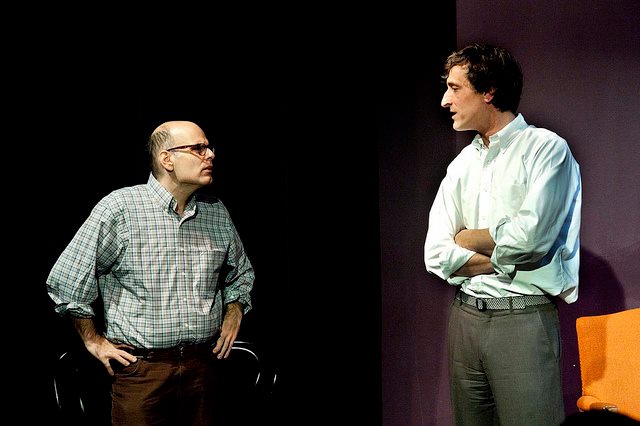Why It's Important to Play the Reality of a Scene in Improv

Some improv teachers (including myself) will say over and over again “Don’t try to be funny.” That can be confusing.
A better approach is, “play the reality of the scene.” When improviser do that, especially when they are given a certain task, the funny will show up without them trying.
In improv, the more believable you are in an imaginary situation, the funnier it will be. That’s why before you can be funny you need to be real. Which means play the reality of the situation.
If the scene has you and your friend driving in a car to go the movies, be in the car, play like you would in real life and trust that funny will appear. Put your seat belt on, turn the engine on, get directions from your friend. All these details build trust and creditability with the audience, and if we do that, they will follow on this journey and pay us back in laughter.
When improvisers have a specific task to do in a scene, it can take their mind off of themselves, which can help them come up with dialogue more easily, because they are grounded in reality. This frees people up.
To help you understand how this works, I’ve explained an exercise you can try below that will demonstrate how easy it is to create a realistic scene and dialogue. When you do this exercise, you’ll be surprised that some of these scenes could easily go over seven minutes long, which in long form is an eternity. The amazing thing is the dialogue will be natural and effortless. Sometimes the scenes are so good that it’s like they are out of a movie or play.
Exercise: The Transaction Scene
Whenever improvisers here this is a transaction scene, the first words out of their mouths are: “We’re not supposed to do transaction scenes!”
I don’t agree with that. That is one of those dumb improv rules. However, it is important to make the scene about more about the relationship between the two characters than just about the transaction itself, which can be boring.
For example, a bad transaction scene would look like this:
Player A works in a coffee shop. Player B is the customer.
Player B: How much is the coffee?
Player A: Five bucks.
Player B: I don’t have five bucks. How about two bucks?
Player A: No, it’s five bucks.
Player B: How about four?
Place A: No, I said it’s five bucks. I could get in trouble.
Player B: Can I see the manager?
Player A: I am the manger.
This is why people think transaction scenes don’t work because they get stuck on the transaction. How many times have you gone to the coffee shop and not paid what the charged? That is not playing the reality of the scene.
Unless it’s part of the character or game the scene, just pay for the price of the coffee, and make sure you have a way to pay for it (cash, credit, debit, gift card, etc). And get over with because it’s not the scene.
Or another one that drives me nuts:
Customer: How much is the coffee?
Coffee Shop Person: $20,000.
What the….? You have lost me. Twenty thousand dollars for a cup of coffee is not realistic in the slightest, and in my 30-plus years of experience doing improv, saying a ridiculous price for something rarely gets a laugh. And it can get even worse when the other player thinks they need to Yes, And it.
These are two good examples of how transaction scene get a bad reputation. However, there are ways to make transaction scenes really interesting. See below:
Transaction Scene Exercise
I have found that this exercise helps improvisers use the environment and the task to ground them in the scene. I can honestly say my students’ success rate with this exercise is very high, especially when the improvisers play the reality of the scene and focus on the task. The key to making this exercise work is that both players need to have a shared history. Theys should both know each other. Maybe they could recognize each other from high school or when they worked at the same company together two years ago or the one person could be the other person’s therapist.
And since they have a relationship and a task, all they have to do is play the reality of the scene and the rest will take care of itself.
To do this exercise, have people pair up and choose a business they are familiar with and create that environment. Then have them decide who is the customer and who is the worker. Then have them plan the environment.
Person A is going into to Subway for a sandwich. Person B is the customer.
Person A is a barista at Starbucks. Person B is the customer.
Person A is a teller at the bank. Person B is the customer coming in to cash a check.
After doing the initial transaction, the players will then recognize each other. From there, all they need to do is play it like they would in real life, and when they do, the funny will come out of the recognition of the situation, and the players’ dialogue will be natural, and in some cases, the scene can go on for up to five minutes.
Let me know how it goes.

